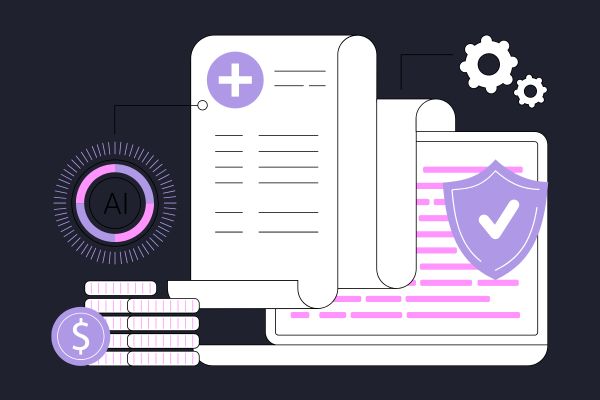Last Updated on November 4, 2025 by Becky Halls
So, you’ve heard about ChatGPT Atlas, OpenAI’s shiny new AI-powered browser, and maybe you’re wondering what it means for your website… Well, when we look to optimize for ChatGPT Atlas, it’s not just another Chrome alternative…
Atlas changes how people experience your site. Instead of clicking around, reading everything, and scrolling to find answers, users can simply ask ChatGPT to summarise, explain, or act on your content – right inside the browser.
That means your old SEO tricks (like keyword density or meta tag hacks) won’t cut it. What matters now is how clearly your site communicates meaning to an AI.
In other words: you’re not just writing for humans anymore – you’re writing for humans and the AI that represents them.
In our experience, AI-powered browsers like ChatGPT Atlas are already changing how users interact with search results and people expect instant context rather than a list of links.
The good news is it’s actually simpler than it sounds to optimize for ChatGPT Atlas! With a few smart tweaks, you can make your website “Atlas-friendly”, meaning it will show up better in AI summaries, generate richer previews, and stay visible as browsing becomes more conversational.
Here are our 10 practical steps to make your content easy for ChatGPT Atlas (and other LLM-powered browsers) to understand, summarise, and quote back, without sounding robotic or losing your brand’s personality.
1. Write “Answer-Ready” Content (not just keyword-stuffed)
LLMs like ChatGPT Atlas pull summaries directly from your text.
In order to optimize for ChatGPT Atlas this means:
-
Lead with clear, declarative answers near the top.
-
Example:
❌ “In this article we’ll discuss how backlinks work…”
✅ “Backlinks help Google understand your site’s authority — they’re essentially votes of confidence from other websites.”
This improves your odds of being used in an AI summary.
We’ve seen that early adopters of Atlas-style browsing spend more time comparing summaries and less time visiting multiple pages, which means content clarity has never been more important.
2. Add Structured Headings and Clear Hierarchies
Atlas parses H1–H3 tags to find meaning.
Use short, semantic headings like:
-
“How to Build Backlinks (Step-by-Step)”
-
“Pricing Breakdown (2025 Edition)”
Avoid vague labels like “Learn More” or “Our Thoughts.”
3Way tip: Add FAQ schema (JSON-LD) or collapsible Q&A sections; Atlas and AI Overviews often quote these directly.
3. Keep Paragraphs Short and Scannable
LLMs reward clarity. 2–4 line paragraphs are ideal.
Use bolding for key terms and 1-sentence takeaways:
“In short: internal links help distribute authority evenly, and Atlas notices that clarity.”
Remember, if ChatGPT Atlas is summarising your article, it’s literally “reading” your structure. Dense text = lower comprehension accuracy.
4. Include Contextual Statistics & Sources
LLMs love evidence. Adding recent, cited stats helps your content get prioritised for inclusion.
Example:
“In 2025, over 63% of marketers say AI search has reduced their Google traffic.” — Search Engine Journal, 2025.
3Way Tip: Use data that’s no older than 24 months.
5. Optimize for “Conversational Queries”
Users now ask questions instead of typing keywords.
Example prompt inside Atlas:
- “What’s the best way to get backlinks fast?”
So, structure headers and sentences in natural Q&A forms:
- “How can small businesses earn backlinks?”
-
“Why are high-DA links more valuable?”
This aligns your text with LLM retrieval patterns.
6. Use Clear Entity Names (People, Tools, Brands)
LLMs rely on named entities.
Example:
“Ahrefs, Semrush, and 3way.Social each offer backlink analysis, but 3way.Social adds a credit system for equitable exchanges.”
That extra context helps ChatGPT Atlas connect you to trending or authoritative topics.
7. Add “Value-First” Summaries Before CTAs
AI assistants often truncate long pages when generating previews.
So before any big CTA or sales pitch, include a short value summary like:
“TL;DR – We help SEO agencies earn and exchange backlinks safely using AI-matched domain partners.”
This ensures that even summarised snippets reflect your core offer.
8. Update Dates, Numbers, and Screenshots Regularly
LLMs down-rank stale or undated content.
Add:
-
“(Updated October 2025)” near the intro.
-
Current screenshots or charts (not 2022-style UIs).
Even cosmetic updates help you stay in the “fresh content” bracket Atlas prefers.
From what we’ve observed testing across client sites, pages that provide concise, well-structured answers tend to surface more often in AI-generated results, even when traditional SEO metrics stay the same.
9. Embed Semantic Cues (Not Just SEO Keywords)
Old SEO: “best backlinks sites SEO 2025”
LLM SEO: “The best backlinks sites for SEO in 2025 help you trade or earn contextual links safely.”
AI browsers look for coherent semantic meaning, and this mens natural phrasing lead to exact match spam.
10. Add “Actionable Context”
When AI summarises your post, users often want next steps.
Give explicit value:
“Want to find your backlink opportunities? Try the 3way.Social campaign generator – it scans your niche and suggests live partner domains.”
This statement gives Atlas something meaningful to quote
Bonus: Technical Tweaks That Help LLM Browsers Parse You
| Area | Why it Matters | What to Do |
|---|---|---|
| Meta Titles | Atlas shows meta titles in chat previews | Keep <60 chars, descriptive & unique |
| Meta Descriptions | Used in LLM snippet context | Write conversationally (not robotic) |
| Alt Texts | Helps Atlas “see” images | Describe value, not file name |
| Internal Links | Guides AI’s content graph | Use descriptive anchor text (“link building credit system” not “click here”) |
| Schema Markup | Provides factual structure | FAQ, Article, Product, Review schemas |
Insight (from LLM SEO testing):
“Pages that follow conversational structure (Q&A, TL;DR, short paragraphs) are 2.3× more likely to be cited in AI Overview answers than long-form, corporate-style posts.”
–PageTest.AI internal dataset, 2025.
Optimize for ChatGPT Atlas – Final Takeaway
If Google was all about keywords, ChatGPT Atlas and other AI browsers are all about clarity and credibility.
So the new formula looks like this:
Human tone + structured clarity + current data = higher AI visibility
Write like you’re teaching, not lecturing. Be quotable. Be helpful.
Because in this next phase of browsing, AI reads first and humans follow.





